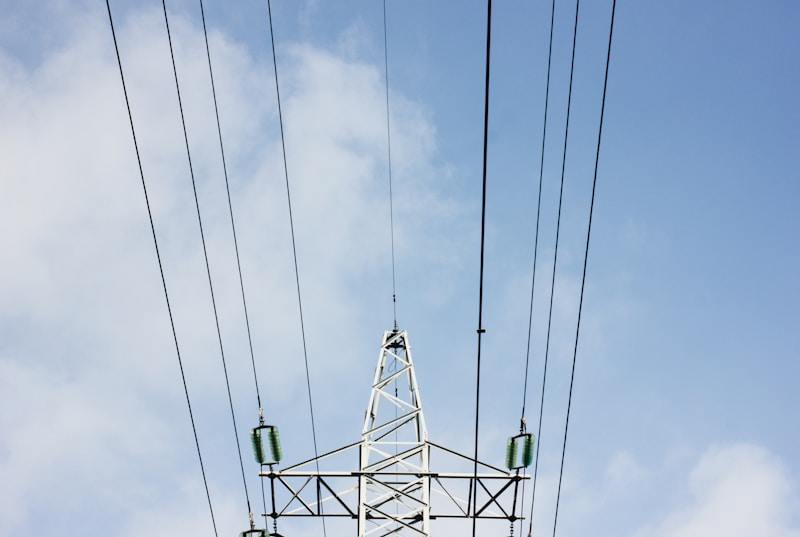12 Questions
What is the fundamental force that governs the flow of electric charge?
Electromagnetism
Who among the following scientists laid the foundations for the principles governing electric circuits and fields?
Michael Faraday
What is the physical phenomenon that causes the force of attraction or repulsion between magnetic materials?
Magnetic field
Which pioneer significantly contributed to our understanding of magnetic phenomena?
Hans Christian Ørsted
In what devices is magnetism commonly harnessed?
Loudspeakers and motors
How are electricity and magnetism interconnected according to physics?
Through electromagnetic fields
What makes it possible to produce electricity from moving magnets?
Electric current generates a magnetic field
In the field of applied physics, who might develop new theoretical models related to electricity and magnetism?
Physicists
What is a common career path for individuals interested in electricity and magnetism research?
Pursuing advanced degrees in physics or electrical engineering
What are some examples of projects that Graduate Research Assistants (GRAs) in electricity and magnetism research might work on?
Developing more efficient solar cells
Why is the interplay between electricity and magnetism considered a dynamic and creative field?
Due to the diverse array of career opportunities it offers
How do researchers in the field of electricity and magnetism contribute to future technological advances?
By exploring new frontiers and understanding the universe better
Study Notes
Embracing Electricity and Magnetism in Physics
Electricity and magnetism are fundamental forces in the universe, intertwined in the realm of physics. These interacting concepts have shape-shifted our world with their influence in power grids, computer chips, and magnetic resonance imaging (MRI) machines.
Electricity
Electricity is the flow of electric charge, often propelled by the movement of electrons in a conductor. The foundations of this phenomenon were laid by scientists such as Alessandro Volta, Michael Faraday, and James Clerk Maxwell, who formulated the principles governing electric circuits and fields. Electricity has revolutionized modern life, and its applications range from power generation and transmission to the processing of information in computers and smartphones.
Magnetism
Magnetism is the force of attraction or repulsion between magnetic materials. It is caused by the movement of electrons in a substance, producing a magnetic field. Pioneers like William Gilbert and Hans Christian Ørsted significantly contributed to our understanding of magnetic phenomena. Today, magnetism is harnessed in devices like loudspeakers and motors, and it is integral to the operation of MRI machines.
Interplay of Electricity and Magnetism
Electricity and magnetism are interconnected through Maxwell's equations, which describe the relationships between electric and magnetic fields. For instance, an electric current generates a magnetic field, and a change in magnetic field induces an electric current. This dynamic relationship is what makes it possible to produce electricity from moving magnets, as in generators and turbines.
Applied Physics and Research Opportunities
The interface of electricity and magnetism is fertile ground for a diverse array of careers in applied physics. Researchers in this field often compete with professionals from engineering, computer science, and other specialized disciplines. For example, engineers design and build electrical components and devices, while physicists might develop new theoretical models or computationally simulate the behavior of materials and systems.
Graduate Research and Career Paths
Graduate students and young professionals seeking careers in electricity and magnetism research typically pursue advanced degrees in physics, electrical engineering, or computer science. Graduate Research Assistants (GRAs) often work on projects that advance the frontiers of electricity and magnetism to solve real-world problems. For instance, a GRA might focus on developing more efficient solar cells, improving magnetic materials for energy storage, or designing new sensors and imaging systems.
In summary, electricity and magnetism are interconnected forces that have profoundly shaped our world. Their interplay is a dynamic and creative field with numerous applications and career opportunities. As researchers continue to explore new frontiers in electricity and magnetism, they lay the groundwork for future technological advances and help us better understand the universe.
Dive into the fascinating world of electricity and magnetism, two fundamental forces that have revolutionized modern technology. Learn about the interplay between these forces, their historical pioneers, practical applications, and exciting research opportunities.
Make Your Own Quizzes and Flashcards
Convert your notes into interactive study material.




